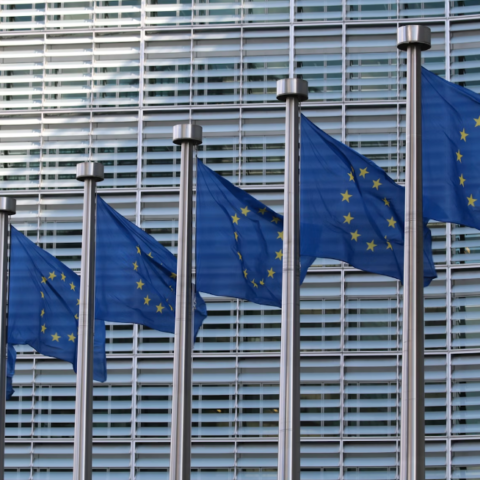By: Jon Wilson

Surprises in elections come, well, surprisingly. Those who follow politics are familiar with the phenomenon known as the October surprise, which is a possibly result-changing news story or election occurrence that can influence the outcome of an election because it comes so near the November elections. These surprises are effective for the opposition because the revelation of information occurs so late in the campaign that candidates are given little time to recuperate. While it is still September, a possibly game-changing event has occurred in the Senate race in Kansas, which matches many of the qualifications for a typical October surprise, or in this case, a September surprise.
Kansas’ political tint is a solid red. The state has not voted for a Democratic presidential candidate since 1964 and has not elected a Democratic member to the U.S. Senate since 1932. However, on September 3, Chad Taylor, the Democratic candidate in this year’s Senate election, withdrew from the race. This leaves incumbent Republican Senator Pat Roberts to face Independent candidate Greg Orman, and could possibly transform Kansas’ Senate election from one of the most predictable races to one of the most contentious in this election cycle.
Roberts’ seat has been in the Republican bloc since 1919, making it the longest-held seat by any party in the Senate without changing hands. Roberts was elected to serve as a senator for Kansas in 1996. In all three of his previous Senate elections, Roberts has amassed more than 60 percent of the vote. In 2002, he had no Democratic opposition and received more than 80 percent of the vote for his first reelection. Roberts had been seen as a GOP incumbent unbeatable in general elections in one of the reddest states in the nation. This year, however, he was challenged in a close primary and won by a plurality of 48 percent, demonstrating his decreasing popularity. Roberts has faced several allegations that he is out of touch with his electorate, including criticism from some Kansas farmers for voting against the Agricultural Act of 2014. Additionally, Roberts moved to the right during the GOP primary this year, while some voters remember that Roberts once denounced “fringe” politicians of both major parties. Finally, some groups in Kansas have chastised Roberts for not maintaining permanent residence in the state he represents. All of these factors have contributed to Roberts’ dismal 27 percent approval rating — six points below President Obama’s state approval — among Kansas voters.
Democrats fielded candidate Chad Taylor to run against Roberts for the race in 2014. While history hints that Democrats should not hold their breath on picking up a seat in Kansas in a low-turnout midterm election year, Roberts’ unpopular position appeared all too enticing. Enter Greg Orman. Independent of both parties, Orman is a businessman who evokes the image of former Kansas moderate Senator Bob Dole – who remains popular in Kansas for his political pragmatism – in his campaign for Roberts’ seat. Less is known about Orman than Roberts, but what Kansas voters are hearing seems to resonate. In recent polling data for a three-way race between Roberts, Taylor, and Orman, Orman gathered more than 20 percent of the vote and left Roberts with only 37 percent, showing how truly vulnerable the incumbent may be. Those trying to unseat Roberts have taken note of Orman’s position, and Taylor’s decision to withdraw from the race and give his support to Orman has likely increased Roberts’ chances of being unseated. There has only been one poll with a two-way match-up between Roberts and Orman, but it shows Orman ahead of Roberts by 10 points with 43 percent of the vote.
While opponents of the incumbent GOP Senator would love to see him unseated, there remain a few questions about this unusual situation, the first of which is whether Taylor’s withdrawal from the race is legal. Kris Kobach, Kansas’ Secretary of State, maintains that Taylor cannot simply withdraw from the Senate election and must be “incapable of fulfilling the duties of office” to successfully remove himself from the race. State officials in Kansas are likely to debate the legality of Taylor’s decision, and Taylor has stated that he will challenge Kobach’s interpretation of Kansas’ election law in court. Even if Taylor must remain in the race, he may campaign for Orman in order to get as few people as he can to vote for his own candidacy, as paradoxical as that notion is.
To spectators of this year’s midterm elections, Orman represents something of a wildcard. His history of political support has been quite balanced. In the past, he has donated to both liberal Minnesota Senator Al Franken and the National Republican Congressional Committee, and voted for Barack Obama and Mitt Romney in the 2008 and 2012 presidential elections respectively. He has stated that he will caucus with whichever party wins a majority in this year’s elections. Thus, he could very easily decide the balance of the Senate if Republicans fail to win a net gain of 6 seats to total more than 51 seats. Additionally, Kansas Governor Sam Brownback has been trailing his Democratic opponent in recent polls and appears increasingly vulnerable. It remains possible that too many votes against Brownback may also hurt Roberts’ chances of keeping his seat. In short, there remain a lot of questions in Orman’s entrance in Kansas’ Senate election. Must Taylor’s name remain on the ballot this November? Can Orman really beat incumbent Roberts in a deep-red state and take a seat that has been the GOP’s for almost 100 years? And if Orman does unseat Roberts, with which party will he caucus? All of these questions show that few are certain about the outcome in Kansas’ Senate race.

